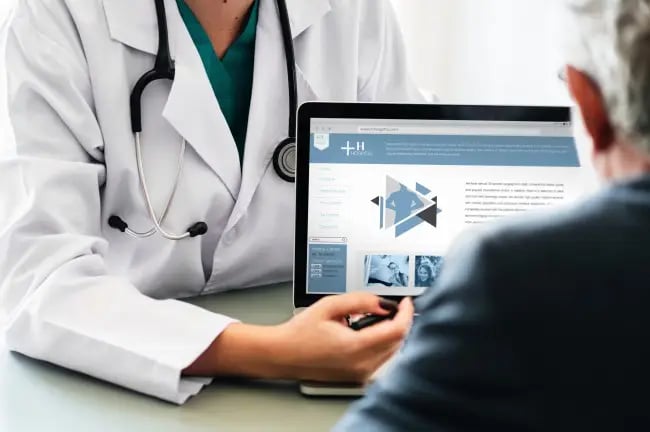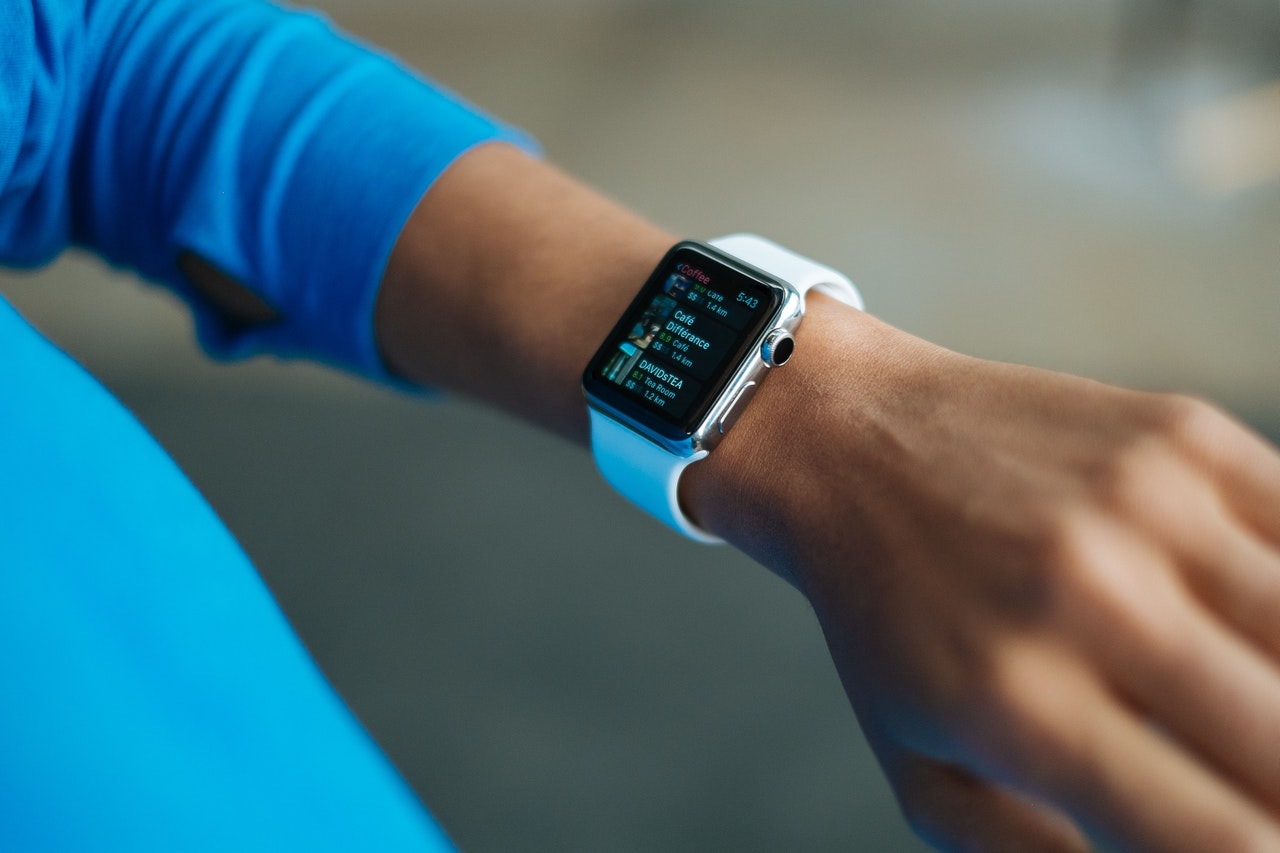 Smart beds, wearable devices, electronic health records—oh my! Medical technology innovation has skyrocketed over the past decade, making way for more personalized and focused patient care. But as much as technology has already advanced, it shows no signs of stopping.
Smart beds, wearable devices, electronic health records—oh my! Medical technology innovation has skyrocketed over the past decade, making way for more personalized and focused patient care. But as much as technology has already advanced, it shows no signs of stopping.
How to Learn New Med Technology While on a Travel Assignment
So, to continue being the fly as heck medical professional that you are, you have to keep up with the times, technology and all. If you’re wondering how to do that, you’ve come to the right place! Let’s dive in to explore what medical tech has to offer.

5 types of popular med tech
We’ve come a long, long way since the invention of thermometers and stethoscopes. While these instruments are still wildly used and important in our modern day, there are now more advanced technologies to get used to. Check out these top popular medical technologies to keep on your radar.
No. 1: Automated IV pumps
If you’ve been in the medical field for a while, you may remember administering fluids like nutrients or pain medication to patients manually. Well, those days are largely behind us with automated IV pumps or “smart pumps.”
Nowadays, most facilities utilize automated IV pumps to help reduce the risk of human error, keep track of specific patient needs, and to give precious time back to medical professionals like yourself. Surprisingly, manual IV drug administration is the reason behind 60 percent of life-threatening medication errors, according to Smith’s Medical. So, more medical facilities have adopted this smart technology into their everyday practices.
With these smart IV pumps, you can program the unit to deliver fluids at precisely programmed rates or automated intervals. Even better, there are safeguards built within the device to enhance patient safety and reduce accidental mistakes. This prime medical technology gives you the time and tools you need to successfully care for patients and without it, your work would never quite end as a medical professional.
No. 2: Portable monitors
Back in the day, patients used to each have their own paper clipboard charts that lived at the end of their bed or in a basket outside of their room. Flash-forward to the 21st century and patients still have their own individual records and information, but rather than living on a hard piece of paper, this vital data is stored on a portable monitor.
We live in a world of pocket-sized smart phones, tablets, laptops, and more that give us real-time information updates, so it only makes sense to do the same for our patients. Especially when you’re required to check on your patients and update their charts every hour or so.
Now, with portable monitors, medical workers can check on the status of their patients from anywhere in the facility. Need to hit the vending machine for a mid-day pick-me-up? Is it time for a bathroom break? Lunch time already? With portable monitors, you can monitor oxygen saturations, respiratory rates, heart rates, and more of multiple patients on one convenient device. And in the event of a medical emergency, you’ll get an automatic alert or notification on your portable monitor so then you can go do your thing to save the day.
No. 3: Smart beds
If you thought regular ‘ole hospital beds were neat with their nurse call button and position adjustability, then get ready for the next best thing…smart beds! Not only can these beds adjust to increase a patient’s comfort-level, but this medical technology can also monitor their breathing, pulse, and temperature through integrated sensor chips under the mattress. Let the bed do the hard work to collect the important patient vitals and then have them sent right over to you on your portable monitor. Through smart patient beds, you can get regular updates and communication on patient activities without having to be present in the room.
Like other medical advancements, smart beds were invented to help reduce the percentage of human errors in medical facilities and improve personalized patient care. According to a Harvard Medical School study, smart beds can help reduce code blue emergency events by 86 percent and as a result, decrease the average stay of intensive-care unit patients by 45 percent. As the most utilized component in medical facilities, patient beds should have the ability to accommodate their needs, whatever they may be.
No. 4: Wearable devices
You’ve heard of wearable devices. You know, fitness trackers, smart watches, wearable ECG monitors, biosensors, and more! Now, nearly 67 million Americans are hopping aboard the wearable technology train and taking advantage of its many benefits.
But first, what exactly is wearable technology? These are small electronic accessories that, when worn, can help measure your body temperature, blood pressure, blood oxygen, breathing rate, sound, GPS location, elevation, physical movement, changes in direction, and the electrical activity of the heart, muscles, brain, and skin. These wearable medical devices can track calorie expenditure, exercise, stress, healthy posture, sleep quality, cognitive decline, and detect early warning signs of infection by automatically and continuously measuring health and then relaying patient information back to medical professionals for review.
Wearable technology empowers patients to take their health into their own hands and be proactive about their wellbeing. And patients aren’t the only ones who benefit from wearable devices. In fact, more than half of medical providers think wearable devices are helpful in monitoring their patients, according to an HIMSS survey.
“A nurse or doctor can tell a patient they need to eat better and exercise at their annual wellness visit,” said Robert Havasy, senior director of connected health at HIMSS. “But they can’t follow patients around the other 364 days of the year. [Wearable technology] goes a long way toward the prevention of diseases before someone gets sick.”

No. 5: Electronic health records (EHR)
Remember those paper patient charts from way back when? Well, they had to be stored somewhere and before electronic health records, that was within countless filing cabinets that were crammed with information. Needless to say, this filling system got old. Fast.
So nowadays, most medical facilities utilize EHRs to replace traditional paper filing techniques. Although the data collection and storage methods are more advanced, EHRs collect the same information that paper charts do, just electronically. Here on your handy portable monitor, you can see a patient’s medical history, demographics, progress notes, medications, vital signs, immunizations, laboratory data, radiology reports, and more all in one easily accessible location.
Not only do EHRs make it simpler for medical professionals like you to document and retrieve patient data, but they also allow for a higher quality of care where patients have transparency into their health information, more accurate patient health information because no one has to interpret your stereotypical messy handwriting (no offense), and increased efficiency through more accurate treatments and diagnoses. In other words, EHRs allow you to work smarter, not harder.
3 steps to learn new technology
If you’ve ever heard the saying, “You can’t teach an old dog new tricks,” well then get ready to have your mind blown. Because you’re about to learn something new, old dog. Here are three easy steps to help you get further acquainted with the ever-changing medical technology.
No. 1: Set aside time to learn
Here’s the thing about learning new technology: It takes time. I mean, you can’t rush perfection, right? So, before you jump in with both feet, take some time to get familiar with the basics.
First things first, do some research on medical technology. What is it? How does it work? Why should you learn it at all? Find the resources that work best for your learning style, from online courses and training programs to seminars and conferences. From there, you can learn all about the pros, cons, and best of all, what you’ll get out of learning the tech. Soak in the knowledge like a sponge.
Plus, taking the time to learn more about a particular technology helps you develop genuine interest towards it. And who said learning isn’t fun?
No. 2: Practice what you’ve learned
Now that you’ve got the basics under your belt, it’s time to put your knowledge to the test. Like Nike says, just do it.
Not only does practice help strengthen your fundamentals, but it also gives you a new perspective that you might not have otherwise gotten without doing it. So, make up practice patient scenarios, phone a friend, and demonstrate how to use the technology. For example, if you’re getting used to working with portable monitors, practice creating new patient charts, simulating emergency alerts, and carrying it on your person wherever you go.
The more practice time, the better. This is the perfect opportunity to experiment, mess up, and try again. By putting your knowledge to the test, you gain more time to analyze and apply what you’ve learned so far without the pressure of real-life breathing down your neck.
No. 3: Share your wealth of knowledge
You know how they say sharing is caring? Well, they’re not wrong and the same is true when it comes to sharing what you know. Not only is sharing your knowledge with others beneficial for them, but it also helps you become a true master on the subject because in order to teach, you must first have an in-depth understanding on the topic. And in thinking about how to share an insight, you improve your understanding and the quality of the knowledge you share. Plus, sharing information gives others the chance to test, apply, and build on what you know to refine and expand the collective knowledge.
If one thing’s for sure it’s that medical technology has changed the ways we view and perform patient care altogether. And as med tech continues to advance, it’s up to you to stay in the know so you can offer the highest level of care to each person you treat. So, whether you’re getting familiar with portable monitors or automatic IV pumps, follow these easy steps to become a master in no time.





